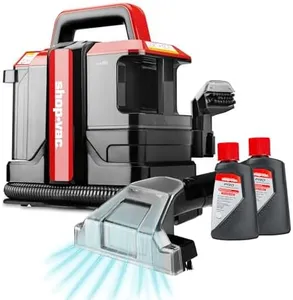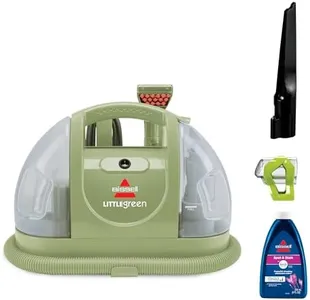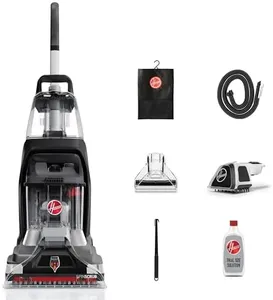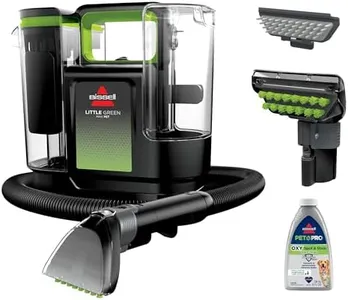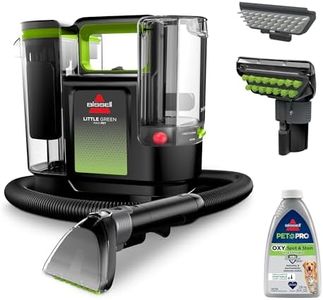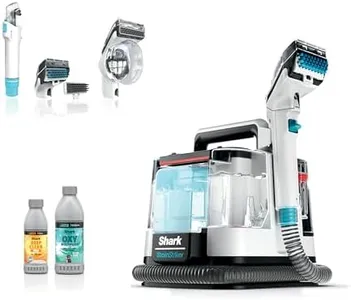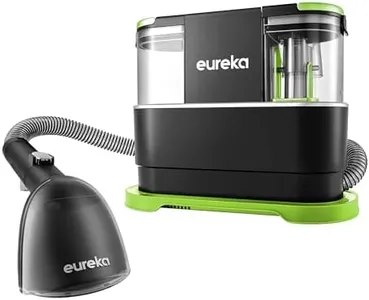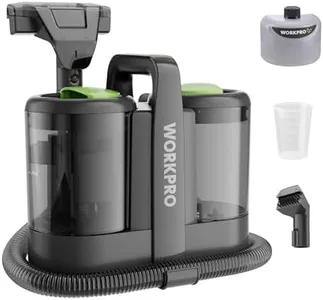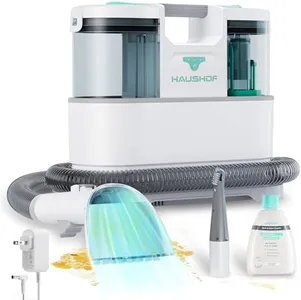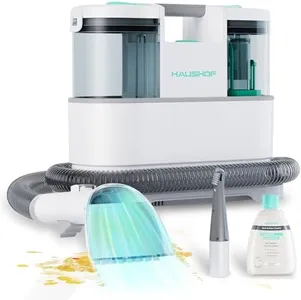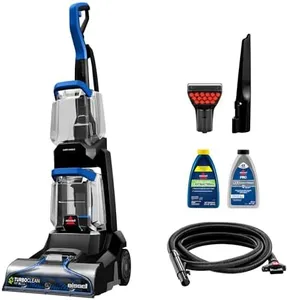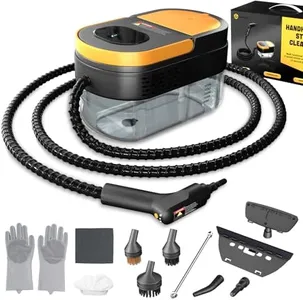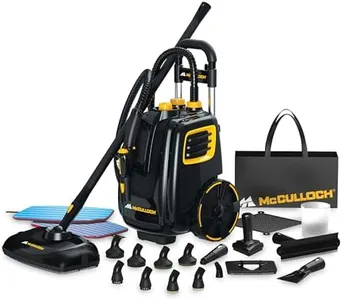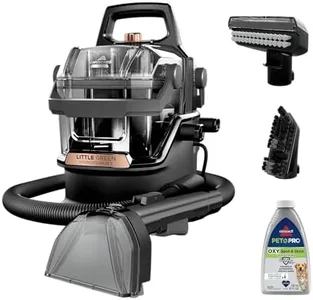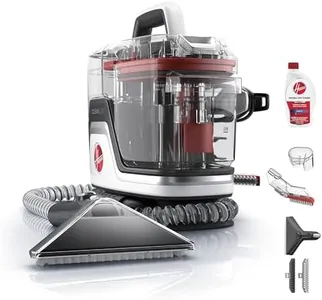10 Best Upholstery Cleaners 2025 in the United States
Our technology thoroughly searches through the online shopping world, reviewing hundreds of sites. We then process and analyze this information, updating in real-time to bring you the latest top-rated products. This way, you always get the best and most current options available.

Our Top Picks
Winner
BISSELL Little Green Multi-Purpose Portable Carpet and Upholstery Cleaner, Car and Auto Detailer, with Exclusive Specialty Tools, Green, 1400B
Most important from
95730 reviews
The BISSELL Little Green Multi-Purpose Portable Carpet and Upholstery Cleaner is a handy tool designed for anyone looking to tackle tough stains on various surfaces like carpets, upholstery, and even car interiors. One of its major strengths is its powerful suction, which effectively removes pet spots and stains, making it particularly suitable for pet owners. The portable design allows for easy maneuverability, and the 48 oz. tank capacity means users can clean larger areas without frequent refills.
In terms of stain removal, the included Spot & Stain formula with Febreze Freshness helps not only tackle stains but also neutralize odors, which is a fantastic feature for maintaining a fresh environment. Additionally, the HydroRinse Self-Cleaning Tool ensures that the unit stays clean for optimal performance after each use, adding to its ease of maintenance.
However, there are some drawbacks to consider. The machine is corded, which might limit mobility during use, particularly in large spaces without power outlets nearby. While it does a great job on stains, some users may find it less effective on very old or set-in stains. With a weight of around 9.65 pounds, it’s relatively lightweight, but some may still prefer a more compact option for easy storage. Another aspect to keep in mind is that while it serves multiple purposes, a dedicated full-sized carpet cleaner may provide better results for extensive cleaning tasks.
Most important from
95730 reviews
Hoover PowerScrub XL Pet Carpet Cleaner Machine for Carpet and Upholstery, Deep Cleaning Carpet Shampooer Machine with Multi-Purpose Tools, Powerful Suction, Includes Oxy Pet Cleaner Solution
Most important from
55972 reviews
The Hoover Powerscrub XL Pet Carpet Cleaner is a strong contender for anyone dealing with tough pet stains and dirty upholstery. It features five SpinScrub brushes that work at multiple angles, making it effective at loosening and removing embedded dirt. This machine's cleaning method is thorough, geared towards deep cleaning carpets and upholstery, making it ideal for pet owners. The HeatForce technology not only helps in cleaning but also speeds up drying time, which is a significant plus for busy households.
Ease of use is another highlight. The TruMAX tank technology allows you to clean multiple rooms without frequent interruptions to empty the dirty water tank. The included tools—like the pet tool and upholstery tool—add versatility, enabling you to tackle a variety of surfaces beyond just carpets.
There are some drawbacks to consider. While it weighs 18.7 pounds, which is manageable, some users may find it a bit cumbersome compared to lighter models. The capacity of 0.8 gallons may mean more frequent emptying than larger machines would require, especially in homes with multiple pets or heavy cleaning needs. Additionally, while the product is generally safe, some users may still prefer to check the cleaning solutions for specific safety and environmental concerns.
Most important from
55972 reviews
BISSELL® Little Green® Max Pet Portable Carpet and Upholstery Deep Cleaner, Car/Auto Detailer, with Self-Cleaning Tough Stain Tool and Pet Hair Removal Tool (3860)
Most important from
1740 reviews
The BISSELL® Little Green® Max Pet Portable Carpet and Upholstery Deep Cleaner is a robust cleaning tool designed for tackling tough pet stains and embedded dirt. It is particularly suited for pet owners or individuals dealing with frequent, stubborn messes. One of its standout features is the superior suction power, which is 30% more powerful than similar portable cleaners, ensuring efficient dirt and stain removal. The inclusion of a self-cleaning tough stain tool also simplifies maintenance by rinsing away residues with ease.
Additionally, the device offers a straightforward operation with its longer hose and cord for extended reach and two-tank technology that keeps clean and dirty water separate, making the filling and emptying process hassle-free. A notable benefit is its ability to instantly and permanently remove pet stains when used with the provided PET PRO OXY Spot & Stain formula that includes Urine Eliminator and StainProtect Technology, protecting against future stains. The cleaner is also equipped with a specialized pet hair removal tool, further enhancing its utility for pet owners.
However, the product's weight of 8.18 pounds may be a consideration for some users, potentially making it less portable than lighter alternatives. Additionally, while the cleaning process is effective, the drying time may vary based on the upholstery type and extent of cleaning required. Despite these minor drawbacks, BISSELL's initiative to support pet foundations adds a positive, ethical dimension to the purchase. This product is a solid choice for anyone needing a reliable solution for deep cleaning carpet and upholstery, especially those with pets.
Most important from
1740 reviews
Buying Guide for the Best Upholstery Cleaners
Choosing the right upholstery cleaner can make a significant difference in maintaining the appearance and longevity of your furniture. Upholstery cleaners are designed to remove dirt, stains, and odors from fabric surfaces, ensuring your furniture looks fresh and clean. When selecting an upholstery cleaner, it's important to consider several key specifications to ensure you get the best product for your needs. Understanding these specifications will help you make an informed decision and achieve the best cleaning results for your upholstery.FAQ
Most Popular Categories Right Now
